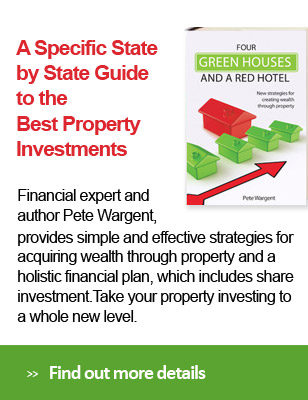Oil prices have fallen more than 50% over the last year.
While lower oil prices are negative for energy producers and this has been weighing on share markets, ultimately it will be positive for growth in industrial countries, Asia and Australia and this should help drive share markets higher by year end.
Dr Shane Oliver, Head of Investment Strategy and Economics and Chief Economist at AMP Capital explained the causes of this and it’s implications in a recent
Insight. Here’s what he said:
INTRODUCTION
The past year has seen the world oil price fall by more than 50%.
Late last year as the fall accelerated this started to act as a drag on share markets and this has resumed at the start of this year as the oil price has continued to slide.
But what’s driving the oil price plunge and isn’t a fall in oil prices meant to be good news?
WHY HAS THE OIL PRICE COLLAPSED?
Put simply the oil price has collapsed because the global supply of oil has surged relative to demand.
Last decade saw the price of oil go from $US10/barrel in 1998 to $US145 in 2008.

Black lines show long term bull & bear phases. Source: Bloomberg, AMP Capital.
This sharp rise in the oil price both in nominal and real terms encouraged greater fuel efficiencies (use of ethanol, electric cars, etc) and more importantly encouraged the development of new sources of oil.
A significant example of this has been the surge in US shale oil production this decade which has taken US oil production back to 1980s levels.
We are now seeing benefit of this.
 Source: Bloomberg, AMP Capital
Source: Bloomberg, AMP Capital
This is similar to what occurred in response to sharp rises in oil prices in the 1970s, which then resulted in much weaker prices through the 1980s and most of the 1990s.
Other factors playing a role in the oil price collapse include:
- Slowing growth in the emerging world. The emerging world was a key source of growth in oil demand last decade but emerging country growth has slowed over the last few years in response to various economic problems. In particular Chinese economic growth has slowed to around 7% compared to 10% or so last decade.
- A rise in the value of the $US in response to relatively stronger economic conditions in the US. This weighs on most commodity prices as they are priced in US dollars. However, the oil price has also collapsed in euros, Yen and the $A so its not just a strong US dollar story.
However, the surge in the supply is probably the main factor.
In fact it was arguably OPEC’s decision last November not to cut production but rather to maintain it and try and force other producers to cut that has accelerated the fall.
In a big picture sense oil is just part of the commodity complex with all major industrial commodities – metals, gold, iron ore – seeing sharp price falls over the last few years as the commodity super cycle has shifted from excess demand to one of excess supply.
HOW FAR COULD THE OIL PRICE FALL?
How far the oil price will fall is anyone’s guess just as how much it would rise last decade was.
However, history tells us that it can fall much further than you think until supply is finally cut back.
In the 1980s and 1990s the oil price fell more than 70% before the bottom was hit (see the next chart). More recently oil prices plunged 78% through the GFC but the fall was short lived and supply in recent years has expanded not fallen as a result of the US shale oil revolution.

Source: Bloomberg, AMP Capital.
So a fall back to around $US40 a barrel or just below, ie a roughly 75% fall from the 2008 high is reasonably likely.
This level should start to force supply cutbacks amongst more marginal producers but, as we saw in the 1980s and 1990s, once prices bottom its likely to be followed by a period of base building rather than a quick surge back up.
WHAT ARE THE IMPACTS OF LOW OIL PRICES?
The plunge in oil prices has both positive and negative implications.

This has been reflected in sharp falls in energy share prices and a back up in high yield debt yields in the US, reflecting concerns about indebted US energy companies, and a collapse in the Russian sharemarket and Ruble on worries about the oil dependent Russian economy and a re-run of the 1998 Russian debt default.
And it’s these more visible impacts that have dominated the broad share market reaction to the oil price plunge over the last few months.
However, lower oil prices are a huge positive for the global economy generally. Oil price hikes lift business costs and are like a tax on households and so a surge in oil prices played a big role in the recessions of the mid 1970s, early 1980s, early 1990s and in 2008-09.
This all works in reverse for oil price slumps as business costs fall and the lower price of fuel provides a boost to household spending power. Rough estimates suggest a boost to growth in industrialised countries and in Australia from the 50% fall in the price of oil of around 0.7% if the fall is sustained.
Asia is likely to see a slightly bigger boost as most of Asia is a net importer of oil. Lower energy prices will also bear down further on inflation, which in turn will mean more pressure on China, Japan and Europe to ease further and a possible further delay in the timing of the first Fed rate hike.
In Australia the December quarter CPI to be released later this month is likely to show inflation running around 2% providing plenty of scope for further RBA easing.
For Australian households, the plunge in the global oil price adjusted for moves in the Australian dollar indicates average petrol prices have further to fall towards $1/litre (see next chart), as the usual lags work through.
In fact some service stations have already dropped the petrol price to 99.9 cents a litre.
Source: Bloomberg, AMP Capital.
Current levels for the average petrol price of around $1.13/litre represent a saving for the average family petrol budget of around $14 a week compared to mid last year. If sustained this will amount to $728 a year, which is a significant saving.
If the 99.9 cent/litre price becomes the norm then the saving will rise to $988 a year (see next chart). Some of this extra discretionary income will likely be spent.

Source: AMP Capital
So the fall in oil prices should provide a solid boost to growth over the year ahead.
IMPLICATION FOR SHARE MARKETS
Share markets have initially reacted negatively to the fall in oil prices because the negative impact on energy producers is what is most visible and this is being magnified by the steepness of the fall.

To be sure this impact could linger for a while yet and some sort of blow up – like further problems in Russia or a default by a more marginal energy company – cannot be ruled out.
However, the risk of a major threat to the global economy or share markets from energy producers is low:
- US energy production was a bigger share of the US economy in the 1980s and yet the mid 1980s collapse in oil prices helped boost the economy and share markets back then;
- While the Russian economy is facing a crisis (made worse by its own actions in Ukraine), a 1998 style Russian public debt default looks unlikely. Russian public debt is low at around 9% of GDP compared to more than 50% of GDP in 1998, public debt in foreign currency is trivial and foreign exchange reserves are much higher now. Private debt is more of an issue now but much of it is owed by just two companies (Gazprom and Rozneft) who have foreign exchange earnings and the Russian central bank has indicated it will help out companies meet foreign exchange obligations.
More broadly, its likely that over time the positive impact on global growth and hence profits from lower oil prices will dominate and this will help drive share markets higher by year end.
After oil prices plunges into 1986, 1998 and 2008 US shares gained an average 23% over the subsequent 12 months.
As a result any significant dip in share markets in response to lower oil prices should be seen as a buying opportunity.


 I also feel that the events of and fallout from the sub-prime crisis of 2007-2009 may force the world’s central banks to adopt a slightly different approach – rather than only focussing on controlling CPI and turning a blind eye to asset-price inflation, they may take a more active role in the controlling and deflation of asset bubbles.
I also feel that the events of and fallout from the sub-prime crisis of 2007-2009 may force the world’s central banks to adopt a slightly different approach – rather than only focussing on controlling CPI and turning a blind eye to asset-price inflation, they may take a more active role in the controlling and deflation of asset bubbles.










